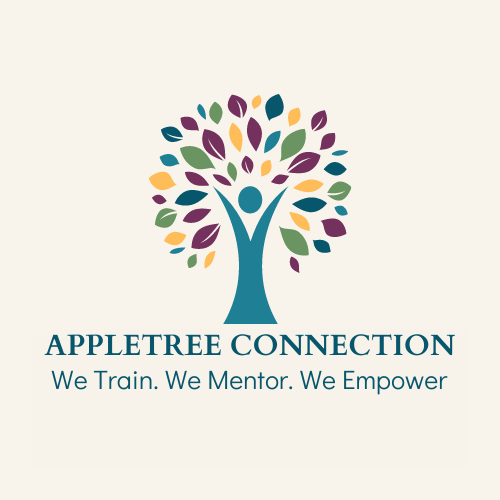
How Many Modules Are in RBT Training? A Simple Overview
Becoming a Registered Behavior Technician (RBT) is an exciting journey for people who want to help others, especially those with special needs. RBTs work with behavior plans created by a Board Certified Behavior Analyst (BCBA). To become an RBT, one important step is completing a 40-hour training program, which is required by the Behavior Analyst Certification Board (BACB). This training teaches you how to work with people using the science of Applied Behavior Analysis (ABA). RBTs are board certified scientist-practitioners who work on the front lines, providing life-changing work in the human services field.
At AppleTree Connection, our RBT training courses are designed to help you connect what you learn in the classroom to real-life situations. Whether you end up working in a school, clinic, home, or somewhere else, our Empowered RBT™ course will help you prepare for any environment.
Let’s explore the most important modules in RBT training:
Introduction to RBT & ABA
The first module starts by explaining what an RBT is and how behavior analysis (ABA) works. This is where you’ll learn what RBTs do on a daily basis, the important rules they need to follow, and how ABA can help people who have behavior challenges. ABA is all about understanding why people do the things they do, and how to setup the environment to encourage positive behavior change. This module provides the foundation you need to understand the rest of the course. By the end of this module, you will have a clear idea of what it means to be an RBT, the history of Applied Behavior Analysis, and what a career in ABA looks like.
Assessment
Assessment means finding out about the environmental factors that affect a person's behavior. This is a big part of ABA. In this module, you’ll learn how to gather information about the client, and the difference between direct and indirect assessments. You’ll also learn how to help a BCBA (the person in charge of creating the behavior plans) conduct various behavior assessments. This includes things like Functional Behavior Assessments (FBA) and preference assessments, which help figure out what a client likes or doesn’t like. Assessment is super important because it helps the team understand what the client needs help with and what programs need to be created in order to support behavior improvement.
Measurement
After learning how to assess behaviors, it’s time to focus on measurement. This module will teach you how to measure behavior in a precise way. You’ll learn how to keep track of how often a behavior happens, how long it lasts, and how much time passes before a behavior starts. These are key skills for any RBT because you’ll need to use these measurements to help the BCBA decide if a treatment is working, or not working. Good measurement leads to data-based decisions directly relarted to a client’s progress.
Skill Acquisition
Skill acquisition means learning new skills, and that’s what this module is all about. In ABA, one of the main goals is to help clients learn new behaviors that will help them in everyday life. Behavior practitioners are learning scientists. This module teaches you how to help clients learn new skills by using things like prompting, reinforcement , and behavioral momentum. Additionally, you will learn how to support complex skills like social skills, daily living skills (e.g. brushing teeth or getting dressed), and becoming behaviorally equipped for academic skills. You’ll learn how to break these big tasks down into smaller steps and teach them in a way that fits each client’s individual needs. These methods help clients learn faster and stay motivated. By learning how to do this, you’ll be able to help your clients grow and become more independent. Helping clients learn these important skills is one of the main jobs of an RBT, so this module is key to your success.
Behavior Reduction
In ABA, RBTs don’t just help people learn new skills—they also help reduce problem behaviors. This module teaches you how to help a client reduce behaviors that get in the way of learning, such as aggression, self injusry or eloping (running away). You’ll learn how to figure out why a problem behavior is happening and then help your behavior team come up with a plan to help reduce it. The goal is to always keep the client safe and help them learn better ways to behave. Learning how to reduce problem behaviors is a big part of being an RBT.
Ethics: Documentation & Professional Conduct
As an RBT, you are supported by the RBT Ethics Code established by the BACB. It’s important to follow the guidelines set forth when it comes to documenting and tracking the work you do, behaving ethically and treathing your client with dignity.. This module will teach you the ethical guidelines you need to follow, like keeping client information private, being professional when working with clients, families, and other team members, how to advocate for your client, how to advocate for yourself with your supervisor and more. You’ll also learn how to document everything you do in a way that’s clear and accurate. These are skills you’ll need in every job as an RBT.
Cumulative Final
The last module is a review of everything you’ve learned. You’ll take a final test that covers all the key ideas and skills from the 40-hour training. This test helps make sure you’re ready to move forward in becoming an RBT. Once you pass, you’ll be one step closer to becoming certified!
